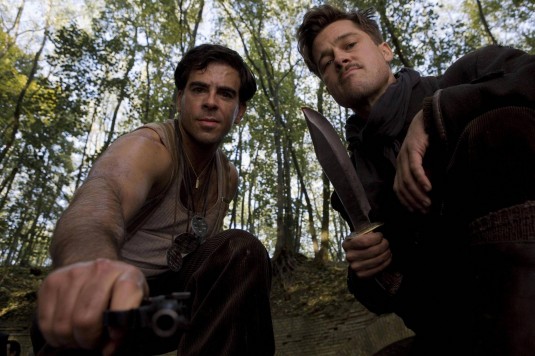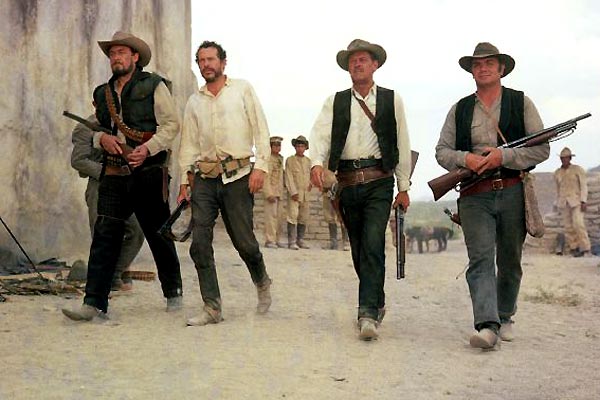Watching onscreen violence can be a release, a harmless thrill; we watch murder most vile so we wonít actually perform the acts ourselves. Today, PG-13 movies show blood-soaked bullet holes and hungry vampires/zombies in action. And America loves it.

Quentin Tarantinoís Inglourious Basterds which includes scenes of intense violence was on many criticsí 2009 top ten lists. The January 8th issue of Entertainment Weekly chose the movie as an expected Best Picture Oscar contender. Reviews skewed mostly to the B, B+, A- range. While itís not the best movie of last year, it is certainly one of the most entertaining ones. And itís not just critics who think so: the movie is now Tarantinoís biggest box office hit.
Most of Tarantinoís movies exploit violence, and especially violent revenge, for entertainment. But years before Tarantino watched his first exploitation flick, director Sam Peckinpah released a string of visceral action movies, starting with The Wild Bunch in 1968, which helped usher in a new generation of movies that didnít have to shy away from realistic gunplay. In The Wild Bunch, and later with The Getaway and Strawdogs, Peckinpah staged action scenes as an extended slo-mo catharsis of revenge-fueled violence.
His movies donít just build to a violent ending; they start violently and continue relentlessly until the bloody finale. Peckinpahís anti-heroes live by an ethical code of conduct that ultimately places them in deadly confrontations whose outcomes are certain death. But the protagonists continue in the face of incredible odds because they know they are doing the right thing within the construct of their world view. For Peckinpah, codes are often forged from money, friendship, and revenge, forking into sub-code tributaries like honor, pride, and shared history.

His scenes of violence cultivate a universal feeling of us-against-them. The aging gang at the heart of The Wild Bunch is screwed by a Mexican general when he kills a member of the Bunch after promising to let him go. In turn, they kill the general in his compound and go down in a blaze of guts and glory. The Bunch knew their way of operating was displaced in the new west and would probably get them killed. Why not go on their terms?
Peckinpah was always attracted to outsiders and what happens when theyíre double-crossed. As David Thompson says in The New Biographical Dictionary of Film, ìThroughout Peckinpahís work, there is the theme of violently talented men hired for a job that is loaded with compromise, corruption, and double-cross. They strive to perform with honor, before recognizing the inevitable logic of self-destruction.î
The Getaway starts with Steve McQueen as Doc McCoy leading a dangerous a bank heist. When heís double-crossed, the movie continues as a chase movie, ending with a brutal, inevitable shootout in the hallways, stairwells, and elevators of a Mexican border town hotel. We know whatís coming, the movie telegraphs it an hour beforehand.

But this foreshadowing ramps up the conflict and tension leading to McCoyís final retribution. Peckinpah is a master at building tension. Even after a dozen viewings I still get a jolt when I pop in The Wild Bunch. The title sequence alone is textbook Peckinpah: cross-cutting between the interior and exterior of a bank during a daring robbery.
Tune in next time as we discuss Tarantino's films, and how he has updated revenge violence for a contemporary audience.
Meanwhile, check out this trailer for Peckinpah's Strawdogs:
Come back on Thursday for Part 2!
No comments:
Post a Comment